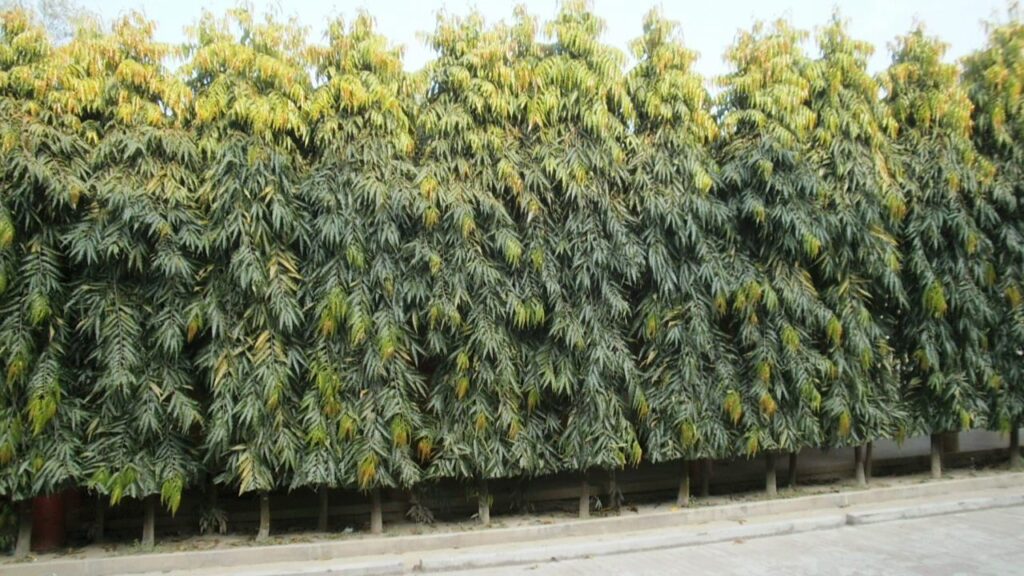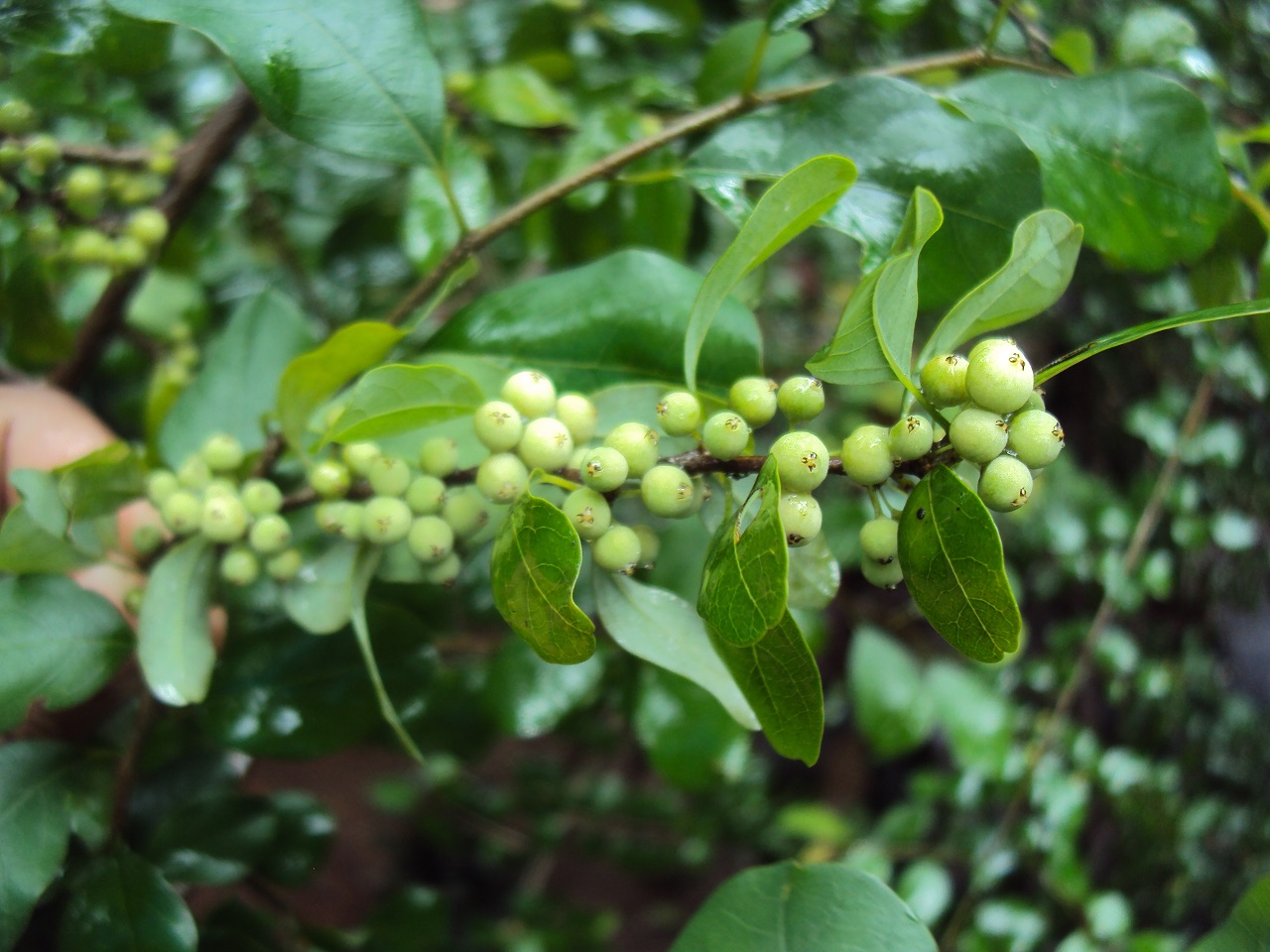
Family: Pinaceae
Biological classification
- Kingdom: Plantae
- Subkingdom: Viridiplantae
- Division: Tracheophyta
- Subdivision: Spermatophytina –
- Class: Pinopsida
- Subclass: Pinidae
- Order: Pinales
- Family: Pinaceae
- Genus: Cedrus
- Species: Cedrus deodara
Introduction To Deodaru
Cedrus deodara, the deodar cedar, Himalayan cedar, or deodaru, a common name, is derived from the Sanskrit term devadāru, which means “wood of the gods”, a compound of deva “god” and dāru “wood and tree”.

Habitat / place of origin
This is a species of cedar native to the Himalayas.
Synonyms of Deodaru
Sanskrit : Devdaru , Bhdradaru , Surubhuruhu , Amara , Devahvaya
Assamese: Devadaru Gachh
Bengali: Devdaru
English: Deodar, Himalaya Cedar
Gujarati: Devdaar
Hindi: Devdaar, Diar , Diyar
Kannada: Deevdar
Malyalam: Devadaru , Devdaram , Devataram
Marathi: Deodar
Oriya: Debadaru , Mahadaru , Amara Taru , Debadaru
Punjabi: Diyaar
Tamil : Devdaru , Tevataram , Tunu Maram
Telugu: Devdari
Unani: Diyar , Daevdar
Morphology of Deodaru
It is about 250 feet high.
Stem: Stem is about 30m high upto 3m at breath diameter . branches are facing downwards and grow in a cone shape manner.
Leaves : Conical pointed green coloured which stable for 3-5 years without falling.
Flower: Monoecious plant.
Fruit : 4-5 inches long and 3-4 inches wide circular , spinous . seeds are brown coloured cone shaped or circular.
Flowering time: October – November
Fruiting time : October -December
Medicinal Parts of Deodaru
Extract of stem and oil.

Plant variety of Deodaru
It has following varieties :
- C. atlantica
- C. brevifolia
- C. deodara
- C. libani
Chemical Composition of Deodaru
Main components includes oil α-Terpineol (30.3%) , Linalool (24.47%), Anethole (14.57%). Caryophyllene(3.14%) And Eugenol . It Contain Lignans And The Phenolic Sesquiterpene Himasecolone , Together With Isopimaric . And Cedeodarine , Cedrin , Cedrinoside . Isohimachalone.
Ayurvedic Properties
Rasa (Taste) : Tikta
Guna (Quality) : Laghu , Snigdha
Virya (Potency) : Ushna
Vipak (Post Digestive Effect): Katu
Karma (Pharmacological Actions) of Deodaru
Datukarma: It Reduces The Kapha-Vata Shamak
Sansthanik Karma (General Indications): Shothahar , Vednasathapan , Kushthaghan , Kirimighan , Varan Shodhan , Varanropan
Nadisansthan (Cns): Vednasathapan
Pachnasansthan (Digestive System): Deepan , Pachan , Kirimighan , Anuliman
Raktvahsansthan (Cvs): Hridya Uttejak , Raktparsadak ,
Swasansanthan (Respiratory System): Kaphnisarak , Saleshmputihar , Hikkanigrahan
Mutravahsansthan (Urinary System): Mutrajanana , Premehghan ,
Prajanana Sansthan (Respiratory System ): Garbhashaya Shodhan, Satnay Shodhana
Tavcha (Skin): Kushthaghan
Tapkarma : Swedjanana , Jawarghan
Lekhan
Qualities/Effects on Tridosha of Deodaru
It reduces the kapha dosha by ushna and tikta , and also reduces the vata dosha by snigdha and ushna guna.
Formulations
- Devdarvaadi kwath
- Devdarvaadi churna
Therapeutic Uses of Deodaru
- It is indicated in kapha vata diseases.
- It is indicated in joint pain.
- Oil is indicated for different healing process.
- It is indicated on wounds.
- It is indicated in arthritis , headache.
- Indicated in indigestion.
- Indicated abdominal distension.
- In constipation.
- In worm infestations.
- Indicated as blood purifier .
- For blood disorders.
- Also indicated in swelling .
- Elephantiasis.
- Indicated in old cough , rhinitis .
- Indicated in hiccups.
- Used dysuria.
- In diabetes.
- Breast diseases and in puerperal disorders.
- Indicated in different skin disorders.
- Indicated in fever.
- Indicated in obesity.
Dosage
- Powder= 3-6gm
- Oil= 20-60 Drops
How can you consume Deodaru?
It is used as oil , powder , kwath and in different formulations in Ayurveda . It is used in the form of lepa.

Benefits of Deodaru
- Used in cough and cold
- Used in asthma
- Used in osteoarthritis
- Used in obesity
- It used as anti wrinkle , aging and on dry skin
- Used for wound healing
- Used in urticaria
- Strengthen the body and boost the immune system against many disease
- Protects the nervous and brain damage
- It also lightens the skin and skin tissue
- Increase the tone of skin
- It has soothing and sedative effects
- Manages the anxiety , insomnia , fear , depression
- Have calming activity
- Reduces the nature of epilepsy , seizures and loss of awareness
- Anti allergic and anti inflammatory properties
- Treats the wounds and pruritus
- It is natural blood purifier
- Used in fungal infection in case when mixed with guggulu
- Helps in treatment of syphilis
- Effective in constipation
- Enhances the peristaltic movement of intestine
- Abdominal pain , muscles , cramps , intestinal contraction
- Used in haemorrhoids and blood clots
- Used in chronic diarrhea
- Used in swelling , pain and in difficulty in movements
- Treats the arthritis
- Used in joint pain
- Used in treatment of TB
- Used cold and cough
- Used in asthma
- Controls fever
- Improves the liver functions
- Used in sepsis
- Used purpura and dysuria
- Chronic kidney failure
- Relieves backache effective in uterine dysfunction , amenorrhoea , leucorrhoea , anovulation , dysmenorrhea
- Controls obesity
- Treats hair loss
- Also used in fungal infections
Side Effects
It can cause allergic reactions.
Safety Precautions of Deodaru
- Avoid the use in breastfeeding and pregnancy.
- Use after mixing with coconut oil if having a hypersensitive skin.




